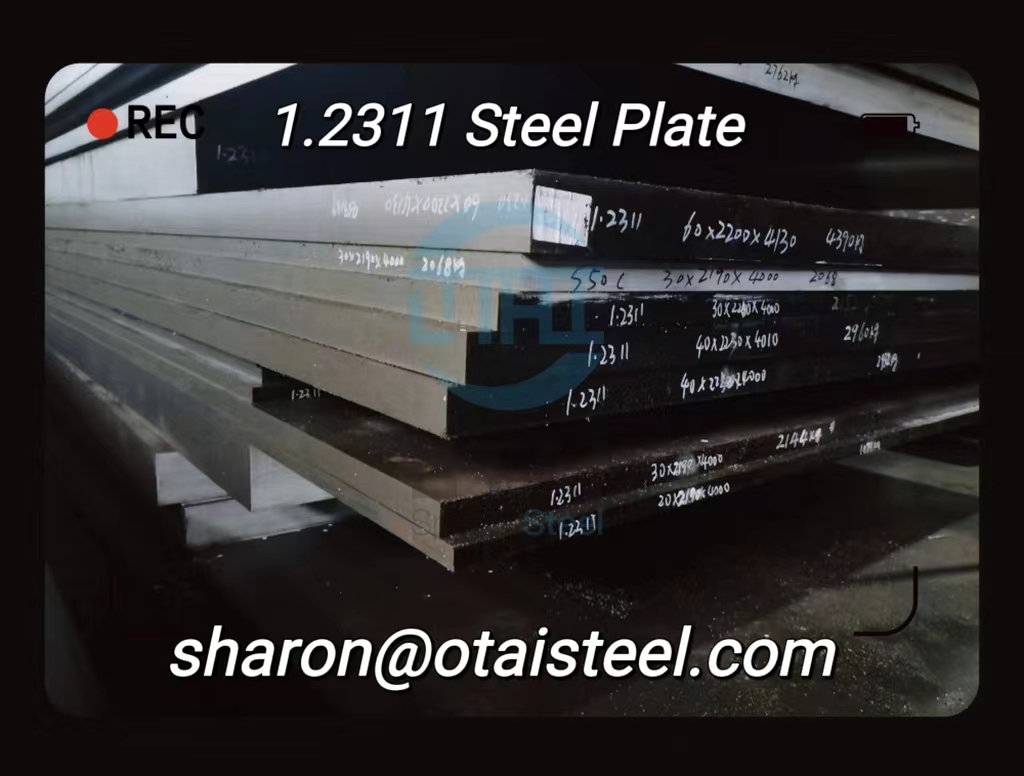If you’re in the world of metallurgy, construction, or manufacturing, you’re likely no stranger to the importance of different types of steel. One such steel variant is the 1.2311 tool steel, renowned for its versatility and performance. In this article, we’ll delve into the dimensions of 1.2311 tool steel sheets, exploring their significance, applications, and benefits.
Introduction
1.2311 tool steel is a popular choice in various industries due to its exceptional mechanical properties and suitability for different applications. One crucial aspect of this steel is its dimensions, which play a significant role in determining its usability and adaptability.
Properties of 1.2311 Tool Steel
Hardness and Durability
One of the primary reasons for the widespread use of 1.2311 tool steel is its remarkable hardness and durability. This steel variant is known for retaining its strength even under challenging conditions, making it an ideal choice for tools subjected to heavy loads and wear.
Machinability and Weldability
Beyond its impressive hardness, 1.2311 tool steel also exhibits excellent machinability and weldability. Manufacturers find it relatively easy to shape and manipulate this steel into various forms, contributing to its versatile application across different industries.
Common Applications
Plastic Molding
In the realm of plastic molding, precision and consistency are paramount. 1.2311 tool steel finds its place in manufacturing plastic molds, ensuring that the final products meet stringent quality standards while maintaining dimensional accuracy.
Die Casting
Die casting relies on durable and dimensionally stable molds. The properties of 1.2311 tool steel make it a preferred choice for crafting these molds, ensuring high-quality castings with intricate designs.
Structural Components
The construction industry benefits from 1.2311 tool steel as well. This steel variant can be found in various structural components, thanks to its combination of strength, toughness, and ease of fabrication.
Dimensions of 1.2311 Tool Steel Sheets
Thickness Variations
1.2311 tool steel sheets are available in a range of thicknesses to accommodate different requirements. This variety allows manufacturers to choose the thickness that aligns with their project specifications, ensuring optimal performance.
Sheet Sizes
From smaller sheets suitable for intricate parts to larger sheets for substantial components, the dimensions of 1.2311 tool steel sheets cater to a wide spectrum of needs. This adaptability makes it a go-to material for both small-scale and large-scale projects.
Precision in Manufacturing
Tolerances in Dimension
In manufacturing, precision is non-negotiable. 1.2311 tool steel adheres to strict dimensional tolerances, guaranteeing consistency and uniformity across batches of material.
Flatness and Parallelism
Dimensional accuracy extends to flatness and parallelism. Manufacturers can rely on 1.2311 tool steel sheets to maintain these crucial characteristics, minimizing the need for additional processing.
Choosing the Right Sheet Size
Application Considerations
Selecting the appropriate sheet size involves considering the intended application. Whether it’s a delicate component or a robust structural element, choosing the right dimensions ensures optimal performance and longevity.
Project Requirements
Project specifications often dictate the dimensions of the required steel sheets. By carefully assessing the project’s needs, manufacturers can make informed decisions about the most suitable sheet sizes.
Advantages of Different Dimensions
Flexibility in Design
Different dimensions offer flexibility in design. Manufacturers can experiment with various sizes to achieve the desired functionality and aesthetics of the final product.
Minimized Material Waste
Choosing the right sheet size helps minimize material waste. By selecting dimensions that align with the project’s requirements, manufacturers can reduce scrap and optimize resource utilization.
Quality Standards and Testing
ISO Certifications
1.2311 tool steel sheets from reputable suppliers often come with ISO certifications, assuring buyers of the material’s quality and adherence to international standards.
Mechanical Property Analysis
Before integrating 1.2311 tool steel into their projects, manufacturers often perform mechanical property analyses to ensure the material meets the required specifications.
Factors Affecting Dimensional Integrity
Thermal Expansion
Manufacturers must account for thermal expansion when working with 1.2311 tool steel. Proper design and dimension selection can mitigate the impact of temperature-induced size variations.
Cutting Techniques
The choice of cutting techniques can influence the final dimensions of steel sheets. Precision cutting methods are essential to maintaining accuracy.
Ensuring Material Suitability
Hardness Matching
When integrating 1.2311 tool steel components with other materials, matching hardness levels is crucial to prevent premature wear and failure.
Corrosion Resistance
While focusing on dimensions, it’s important not to overlook corrosion resistance. Proper coatings or material treatments can enhance the steel’s longevity.
How to Source 1.2311 Tool Steel Sheets
Trusted Suppliers
Sourcing 1.2311 tool steel sheets from trusted suppliers is essential. Reputable suppliers provide quality materials with accurate dimensions, ensuring the success of manufacturing projects.
Customization Options
Many suppliers offer customization options, allowing manufacturers to order steel sheets in dimensions tailored to their specific needs.
Conclusion
In the realm of metallurgy, the dimensions of 1.2311 tool steel sheets hold immense significance. From plastic molding to structural components, the right dimensions contribute to the success of various projects. As you consider the dimensions of this versatile steel variant, remember that precision, adaptability, and adherence to quality standards are the keys to unlocking its full potential.











